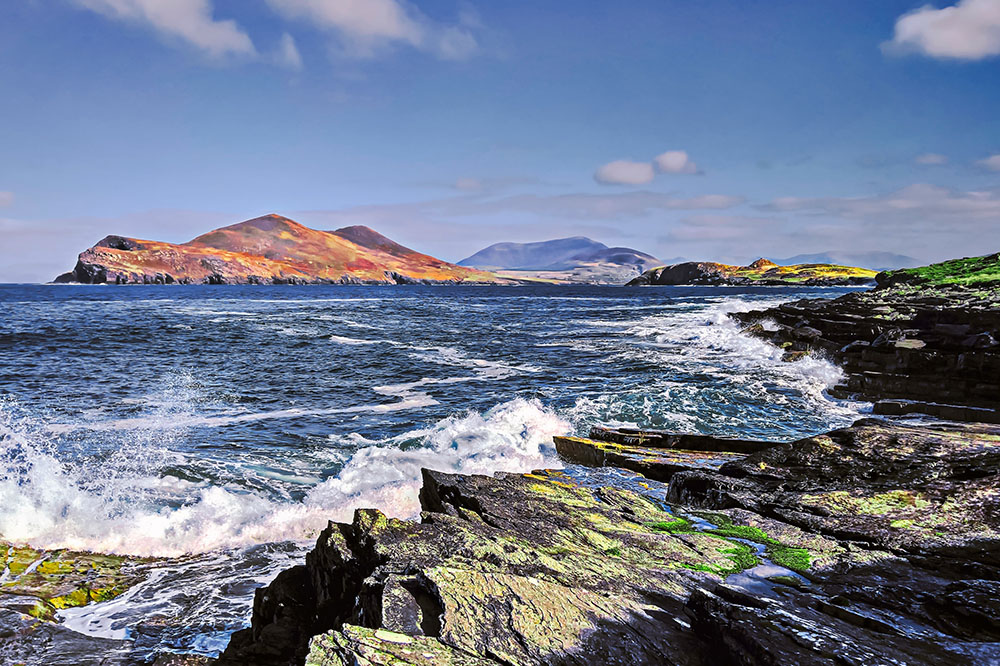Story
Study finds that climate change may make marine management initiatives unsustainable... but bright spots could help
2 November 2021

The team found that the distribution of marine activities may become unsustainable during implementation due to climate change, leading to a shortfall in sustainability and blue growth targets, but opportunities were also identified.
The study, aimed at practitioners, goes on to highlight methods developed to inform adaptive marine management strategies that can help with:
- identifying where sector-relevant ecosystem change is attributable to climate change,
- incorporating resilient delivery of conservation and sustainable ecosystem management aims into marine spatial planning, and
- harnessing opportunities for blue growth, where they exist.
Marine spatial planning (MSP) is a public process that brings together different users of the ocean to make informed and coordinated decisions about how to use marine resources sustainably and achieve certain ecological, economic and social objectives. MSP that addresses ocean climate-driven change (‘climate-smart MSP’) is a global aspiration to support economic growth, food security and ecosystem sustainability and this study was undertaken to help make this aspiration a reality.
The team co-developed pioneering ‘climate-smart MSP’ modelling analyses to meet the needs of the real-life MSP processes in Ireland, enabling nature conservation and fisheries adaptation to climate change. They looked at the significant climate-driven ecosystem-level shifts in ocean components underpinning fishing activity and sites designated as being ecologically important.
Also identified were climate change hot and bright spots, with hot spots representing areas that may be significantly negatively impacted by climate change and bright spots denoting areas where in the short- and mid-term, regional oceanographic processes interact with climate change, leading to temporarily improved habitat conditions.
Capturing bright spots alongside climate-resilient areas (climate refugia) within Marine Protected Area (MPA) networks presents the opportunity to capitalise on a broader range of sites, in support of conservation and blue growth, than previously considered. Also such strategies could be seen as ‘nature-based solutions’ to limit the impact of climate change on ocean ecosystems and dependent blue economy sectors, paving the way for ‘climate-smart MSP’.
For nature conservation in Irish waters, the study identified a climate signal in the distribution of species and habitats of conservation value by the 2040s in coastal areas, where conservation is currently concentrated. That means that already within the next two decades, the ecosystem may enter a state that is very different from what is observed at present, resulting in the potential loss of conditions to support habitats and species of conservation value.
However, opportunities to expand Ireland’s network of conservation sites was also identified: the research uncovered several climate resilient sites offshore that are already designated, and some, not yet protected, providing new opportunities for effective conservation of marine species and habitats into the future. Some of these sites also had high potential to contribute to the delivery of net-zero by sequestering carbon into the seabed. Synergies with the spatial management of other sectors (e.g. energy sector, fisheries) may be needed to support preservation, highlighting the importance of climate-smart MSP in coordinating trade-offs that allow nations to achieve ocean sustainability.

Dr Ana Queiros, Senior Marine Ecologist at Plymouth Marine Laboratory (PML) and lead author on this paper, commented: “During this work we found that the impact of climate change on currently planned initiatives may lead to a shortfall in reaching sustainability and blue carbon targets and therefore adaptive strategies are recommended. Our method has global application: it has been co-developed with MSP practitioners around the world specifically to respond to their need to identify where changes in the ecosystems underpinning each spatially managed area of activity are indeed driven by climate change and, thus, whether climate-adaptive and mitigating strategies should be prioritised.”
Prof. Lisa Levin, Distinguished Professor of Biological Oceanography at Scripps Institution of Oceanography (University of California, San Diego) and co-author, added: “The incorporation of climate change considerations into ocean resource management and biodiversity conservation is a growing challenge in our rapidly changing ocean. This work illuminates an innovative way forward that I hope can be taken up by multiple sectors of the international community. Benefits should accrue to both current and future generations of people and marine life.”
Dr Peter Miller, Senior Earth Observation Scientist at PML and co-author, stated: “We predicted decadal changes in physical features such as ocean fronts that underpin high biodiversity, where MPAs may need to adapt to maintain their conservation benefits.”
Dr Liz Talbot, Benthic Ecologist at PML and co-author, said: “Given the already apparent effects of climate change on ocean habitats and species, the implementation of climate smart MSP is critical. I hope that this work, developed as part of a real-life MSP process, will not only show that this is an achievable goal, but also that the methods presented prove to be a useful tool for scientists, practitioners and resource managers to integrate climate change evidence into MSP.”
The value of approaches such as this, which enables the development of climate-smart MSP as a key step toward delivering net-zero and the Paris Agreement (e.g. by protecting climate-resilience carbon sequestering habitats, by identifying opportunities for co-location with energy infrastructure that also help deliver biodiversity sustainability), is recognised by others internationally. This is noted in the upcoming 'Roadmap to integrate clean offshore renewable energy into climate-smart marine spatial planning' (United Nations Global Compact, 2021) that will be launched later this week.
The study was funded by the Irish Government, Global Challenges Research Fund, European Maritime & Fisheries Fund and the European Union’s Horizon 2020 programme, and led by Plymouth Marine Laboratory (UK) in partnership with Hopkins Marine Station (USA), AZTI-Tecnalia Marine Research (Spain), Nord University (Norway), University of Palermo (Italy), National University of Ireland, Plymouth University (UK), National Institute of Oceanography (Israel), Oceanographic and Limnological Research Institute (Israel), Scripps Institution of Oceanography (USA) ABPmer (UK) and the Marine Institute (Ireland).